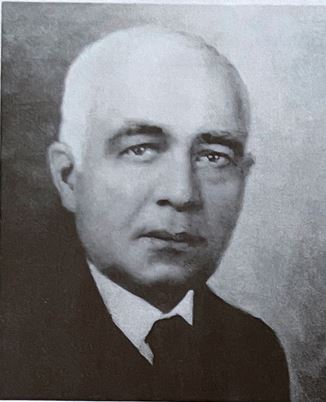Provident Hospital and Free Dispensary was founded in 1894 at
419 Orchard Street, a neighborhood where several hospitals serving the white
population were already located. At that time, admitting black patients to
white hospitals was basically prohibited. Black patients still needed care and
treatment, so a small group of doctors started Provident Hospital.
The founders included Dr. William T. Carr, Sr. (above) and Dr. J. Marcus Cargill. They wanted to
provide an institution where people of color could be attended by physicians of
their own race, and that colored physicians might have an opportunity to
develop themselves in their specialties and become proficient in them. They
also wanted to establish a well-organized training school for nurses.
Among the early physicians at Provident were three Black
physicians who were admitted as members of the Medical & Chirurgical
Faculty of Maryland in the 1880s, when the organization’s by-laws had changed members
from “gentlemen” to “persons.” The first admitted was Whitfield Winsey, M.D.
who became a pupil of Dr. John R.W. Dunbar, a professor of surgery at
Washington University and received his medical degree from Harvard in 1877.
Next was Reveredy M. Hall, M.D. a Baltimorean who graduated from Howard as a
medical doctor in 1872 and was dean and director of Provident Hospital. The
third was William H. Thompson, who was born in Yonkers, NY in 1849 and received
his doctorate degree at Howard University in 1872.
The hospital soon outgrew its home on Orchard Street and in
1896, the hospital moved to 413 W. Biddle Street, where there was room for 30
beds and an adjoining building for the nurses’ training school.
The Provident
Training School for Nurses was the first and only institution in the are to offer
Black women the opportunity to train as nurses. The school received official
recognition in 1926 and was renamed the Provident Hospital School of Nursing.
Over the years, Provident Hospital went
through highs and lows. When Union Memorial Hospital moved to its current
location on 33rd Street, Dr. J.M.T. Finney suggested that Provident buy the
building on Division Street for $75,000. The new building opened on October 15,
1928 with Dr. William T. Carr as superintendent. Sixteen Black physicians were
appointed to the visiting staff and had privileges to treat private patients.
The AMA approved a plan to train six interns
in a general rotating program. There were residencies in pediatrics, general
surgery and anatomic pathology. Provident was one of five hospitals in the
United States that provided specialty training for Black physicians.
Provident stayed at the Division Street
location until the late 1960s when construction commenced on a building on
Liberty Heights Avenue, and was occupied in 1970. By the mid-1970s, the
hospital’s main concern was the integration of Black physicians and patients into
previously all-White hospitals which siphoned potential patients from Provident
Hospital. In addition to the financial de-stability this caused, the hospital
was surrounded by low-income neighborhoods.
Not all news was bad, as surgical and
obstetrical residents and summer students rotated though Provident from Meharry
Medical College. A hypertension program with numerous outreach facilities was assisted
by a significant grant-in-aid. And a cancer-screening clinic, funded by the
Morris Goldseker Foundation was entirely free for participants.
In 1985, a low occupancy rate along with financial
difficulties, including poor cash flow led to the closing of the hospital. But
in 1986 the hospital merged with Lutheran Hospital and formed Liberty Medical
Center.
Lutheran Hospital began in the 1870s in West
Baltimore as the Hebrew Orphan Asylum.
In the 1920s, when the Hebrew Orphan
Asylum moved to where Sinai Hospital is now located, the hospital became West
Baltimore General Hospital. By 1939, the hospital contained 100 beds, a nurses’
quarters, maternity wing and power plant. After World War II, it became
Lutheran Home and Hospital.In the 1990s, a partnership with Bon Secours
Hospital, Liberty and other community-based health centers was formed to become
the Community HealthCare Network of Baltimore. As medical care changed, and
fewer and fewer patients actually stayed at hospitals for any signficant amount
of time, Liberty Medical only had a 10-15% occupancy rate, not enough to keep
the doors open.
In August of 1999, Liberty Medical Center,
which had 282 beds and employed about 400 people on the 15-acre campus on
Liberty Heights Avenue, closed. From a small hospital that began in a row-house
in 1894 to large urban medical center, Provident’s history for caring for the Black
population of Baltimore has not been forgotten.
Sources:
Maryland Medical Journal, April 1997
Journal of the National Medical Association, May 1967
Baltimore Sun, August 8, 1999



.jpg)
.jpg)
.jpg)
.jpg)
.jpg)
.jpg)
.jpg)
.jpg)







